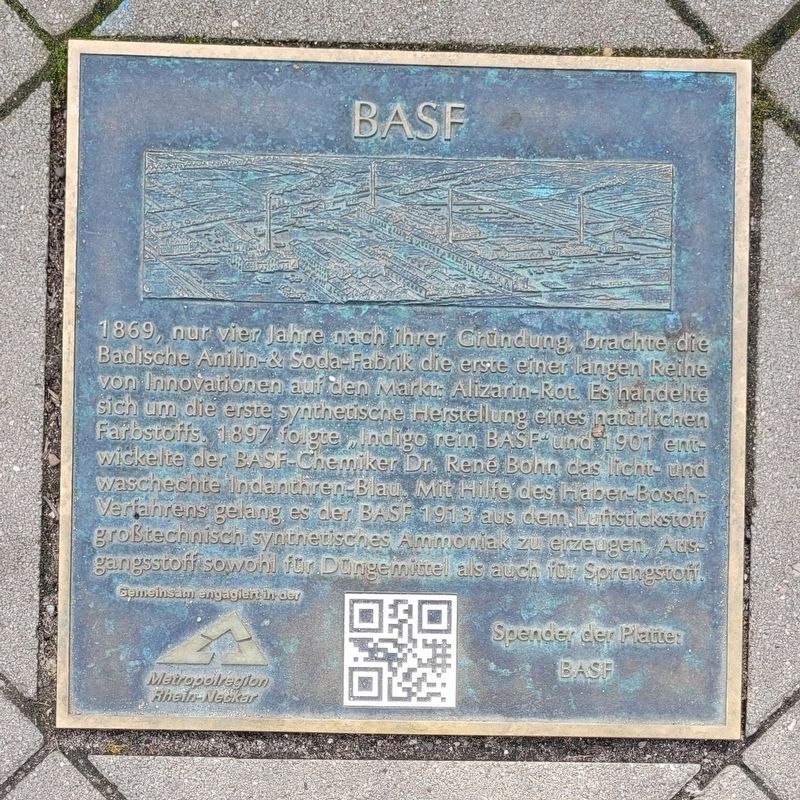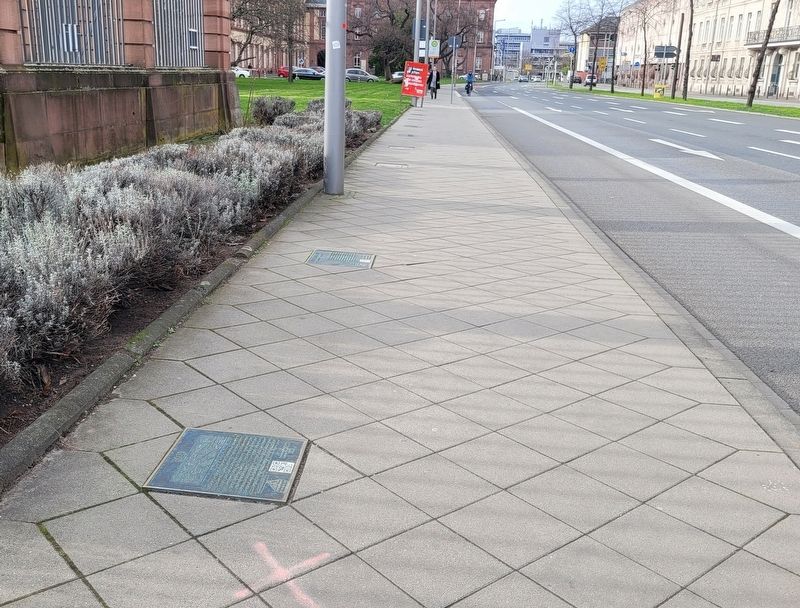Quadrate in Mannheim, Baden-Württemberg, Germany — Central Europe
BASF
1869, nur vier Jahre nach ihrer Grundung, brachte die Badische Anilin-& Soda-Fabrik die erste einer langen Reihe von Innovationen auf den Markt: Alizarin-Rot. Es handelte sich um die erste synthetische Herstellung eines natürlichen Farbstoffs. 1897 folgte „Indigo rein BASF" und 1901 entwickelte der BASF-Chemiker Dr. René Bohn das licht- und waschechte Indanthren-Blau. Mit Hilfe des Haber-Bosch-Verfahrens gelang, es der BASF 1913 aus dem. Luftstickstoff großtechnisch synthetisches Ammoniak zu erzengen, Ausgangsstoff sowohl für Düngemittel als auch für Sprengstoff.
In 1869, just four years after it was founded, the Badische Anilin & Soda-Fabrik brought the first of a long series of innovations onto the market: Alizarin Red. It was the first synthetic production of a natural dye. "Indigo BASF" followed in 1897 and in 1901 the BASF chemist Dr. René Bohn developed the light and wash-fast indanthrene blue. With the help of the Haber-Bosch process, BASF succeeded in producing synthetic ammonia from atmospheric nitrogen on an industrial scale in 1913, raw material for both fertilizers and explosives.
Erected by Metropolregion Rhein-Neckar and BASF.
Topics. This historical marker is listed in these topic lists: Industry & Commerce • Science & Medicine. A significant historical year for this entry is 1869.
Location. 49° 29.066′ N, 8° 27.755′ E. Marker is in Mannheim, Baden-Württemberg. It is in Quadrate. Marker is on Bismarckstraße west of Kurpfalzstraße, on the left when traveling west. The marker is located along the sidewalk in front of the University of Mannheim. Touch for map. Marker is at or near this postal address: B37 14, Mannheim BW 68161, Germany. Touch for directions.
Other nearby markers. At least 8 other markers are within walking distance of this marker. Werner von Siemens (here, next to this marker); Adolf Kußmaul (here, next to this marker); Carl Benz (here, next to this marker); Prof. Dr. Albert Fraenkel (a few steps from this marker); Max Weber (a few steps from this marker); Freudenberg (a few steps from this marker); William Fardely (a few steps from this marker); Karl Friedrich Schimper (a few steps from this marker). Touch for a list and map of all markers in Mannheim.
More about this marker. The bronze plaque is one of 42 plaques set up along the “Electoral Palatinate Mile of Innovations” in front of Mannheim Palace.
Also see . . . BASF - 1869 Alizarin 1890 Indigo 1901 Indanthrene 1913 Ammonia synthesis. Kurpfälzer Mile of Innovations
In 1859, William Henry Perkin, an Englishman who was only eighteen years old at the time, attempted to produce quinine synthetically. In one of his experiments, he treated aniline with the strong oxidizing agent potassium dichromate. This unexpectedly produced a dye: mauveine, also known as aniline purple or Perkin violet. Perkin realized that not only mauveine but also many other dyes could be made from aniline.(Submitted on February 26, 2024, by James Hulse of Medina, Texas.)
Aniline, like many other chemical compounds, is contained in the residues produced during the manufacture of illuminating gas and coke from hard coal: coal tar. Aniline and many other substances from coal tar that are still important for the chemical industry today were isolated and studied by the German chemist Friedlieb Ferdinand Runge as early as the 1930s.
Credits. This page was last revised on February 26, 2024. It was originally submitted on February 25, 2024, by James Hulse of Medina, Texas. This page has been viewed 53 times since then. Photos: 1, 2. submitted on February 26, 2024, by James Hulse of Medina, Texas.

